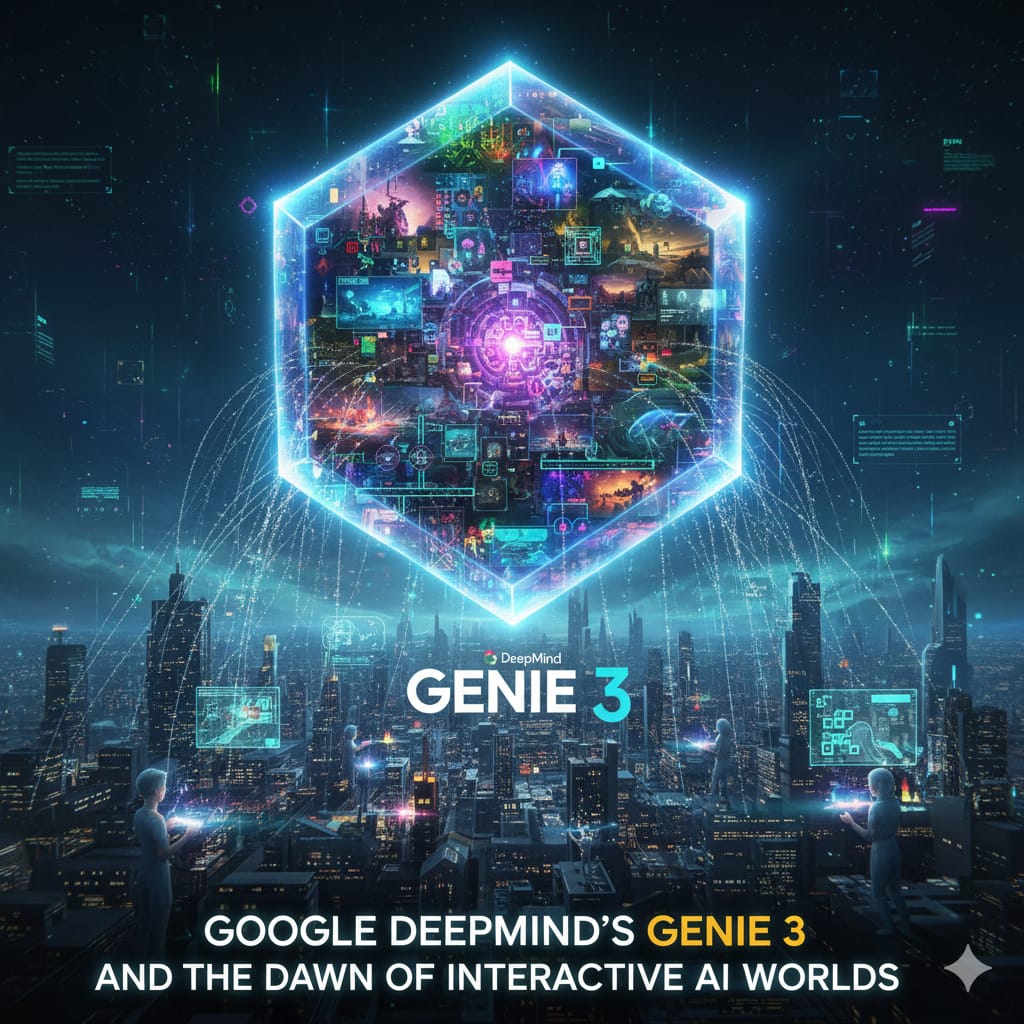Introduction: A New Frontier in AI Development
The relentless march of artificial intelligence continues to reshape our technological landscape, with each new breakthrough pushing the boundaries of what is possible. From the development of sophisticated large language models to advancements in autonomous systems, the pace of innovation is accelerating. A key challenge, however, has always been creating environments where AI can learn and interact in a dynamic, open-ended manner that mirrors the complexities of the real world. Traditional training methods, often reliant on static datasets and pre-defined simulations, can only take us so far. The need for a more comprehensive and flexible training ground has become a focal point for leading research institutions. This is where Google DeepMind's latest unveiled project, Genie 3, enters the conversation, promising to fundamentally change how we build and train intelligent machines.
Genie 3, a novel "world model," represents a significant leap forward in this quest. Unlike previous models that might generate a still image or a short video clip, Genie 3 can create entire interactive virtual environments from a single text prompt or image. This capability enables AI agents to be trained in a wide array of scenarios that are not just visually consistent but also physically and logically coherent. This is not just a marginal improvement; it is a paradigm shift. By providing a limitless and on-demand source of interactive worlds, Genie 3 could dramatically accelerate the development of more robust, adaptable, and generally intelligent AI systems.
Genie 3: Redefining AI's Learning Environment
At its core, Genie 3 operates by learning a deep, generalized understanding of how objects, characters, and physics interact. When given a simple prompt—like "a castle on a hill" or "a bustling market street"—the model generates a fully interactive 3D world where an AI agent can explore, manipulate objects, and learn from its actions. This is a profound departure from training models on passive data, such as images or text, and moves toward an active, experiential learning model. The AI is no longer a passive observer; it is an active participant, able to test hypotheses and learn cause-and-effect relationships in a safe and scalable digital space. This approach is similar to how humans and animals learn through play and exploration, making it a compelling pathway toward more human-like reasoning and problem-solving abilities.
The potential applications of this technology are vast and far-reaching. For robotics, it could mean training robots in millions of virtual scenarios before they ever touch a real object, drastically reducing the cost and time of development. For autonomous vehicles, it offers an infinite number of traffic and weather conditions to master without endangering anyone. But perhaps the most exciting prospect is for the development of Artificial General Intelligence (AGI). The ability to train an AI in a variety of complex, dynamic worlds is a key step toward building a system that can understand and interact with the world in a generalized, rather than a specialized, way.
The Broader Impact: Genie 3 in the AI Ecosystem
The introduction of Genie 3 comes at a time of intense competition and innovation within the AI industry. Alongside Google's breakthrough, other major players are also making significant moves. Microsoft, for example, recently launched its own proprietary models, MAI-Voice-1 and MAI-1 Preview, signaling a strategic pivot to build its own AI stack and reduce reliance on external partners like OpenAI. This move, along with Anthropic's new models focused on coding and reasoning, illustrates a fierce arms race for AI dominance. The race is no longer just about who has the largest model, but who can create the most effective and efficient platforms for developing the next generation of AI. Genie 3's focus on interactive learning could give Google a significant edge in this competitive landscape.
Furthermore, this advancement isn't limited to the private sector. The U.S. National Science Foundation (NSF) has announced the Integrated Data Systems and Services (IDSS) program to build a national-scale AI infrastructure. By making new datasets available for research, such initiatives can directly benefit from models like Genie 3, which can generate rich, synthetic data to complement real-world information. The synergy between private sector innovation and public sector infrastructure could create a powerful feedback loop, accelerating progress across the board.
The Road Ahead: Challenges and Opportunities
While the potential of Genie 3 is immense, its path to widespread adoption is not without challenges. One of the primary hurdles is the immense computational power required to generate and maintain these complex virtual worlds. Creating a realistic, interactive environment on the fly is a resource-intensive process, and scaling it to meet the demands of large-scale AI training will require significant investment in hardware and infrastructure. Moreover, there are ethical considerations. As AI systems become more adept at learning from interactive environments, we must ensure that these training grounds are designed to instill positive and ethical behaviors. The risk of an AI learning unintended biases or harmful patterns from a poorly constructed virtual world is a serious concern that requires careful oversight.
Additionally, the development of these "world models" raises questions about the future of creative industries. If an AI can generate a video game-like world from a text prompt, what does that mean for game developers, designers, and artists? While it is unlikely to replace human creativity, it could serve as a powerful new tool, enabling creators to prototype ideas in minutes rather than months. Genie 3 represents a new type of creative engine, one that could unlock unprecedented levels of content generation and personal expression. The opportunities for integration with existing creative tools and platforms are boundless.
Conclusion: A Glimpse into the Future of AI
The introduction of Google DeepMind's Genie 3 is a landmark moment in the history of AI. By moving beyond static data and enabling interactive, on-demand world generation, it provides a crucial stepping stone toward developing more general, robust, and capable AI systems. This innovation, alongside a flurry of other recent breakthroughs, solidifies the AI industry's shift toward creating not just better models, but entirely new ecosystems for intelligence to flourish. The challenges ahead—from computational demands to ethical safeguards—are significant, but the potential rewards are even greater. Genie 3 offers a glimpse into a future where AI systems can learn and operate in a world as dynamic and complex as our own, accelerating a new era of innovation and discovery.

